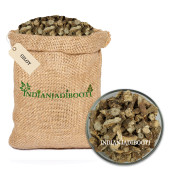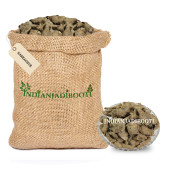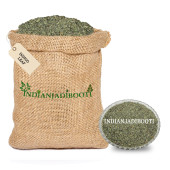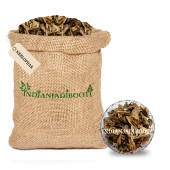Bathua Seeds - Bathua Beej - Lambsquarter Seeds - Lambsquarters Seed - Chenopodium Seeds
1Availability: In Stock
Bathua Seeds - Bathua Beej - Lambsquarter Seeds - Lambsquarters Seed - Chenopodium Seeds
What is Bathua Seeds:
What comes to mind when you think of Bathua seeds? If you're like most people, you probably associate them with an old seasonal green used in cooking.
But did you know that bathua seed seeds are regarded an old seasonal green in India? And did you know it has a long history?
Lambsquarter Seed Seeds is an annual herb found in hill regions in North India. It is a weed that most likely originated in Eurasia and can be found in various hill stations in the North Indian state of Punjab.This plant has upright or rising stems that are simple or branching. The stems are hairy and frequently only on one side.
Bathua Seeds are beneficial as a companion plant since they are utilised as trap crops to attract leaf miners. They can also protect other crops from insect assault. The beet leaf hopper, which transmits curly top virus to beet crops, feeds on Lambsquartar Seed.
Its leaves are 1-2 cm long, 3-7 mm wide, oblong-elliptic to lance-shaped, sparsely to densely hairy, with a pointy to blunt tip and stalkless base. Herbaceous bracts are present.
Uses:
Bathua Seeds are used to treat several skin disorders, and the oil extracted from the leaves is used to treat hook worms. It's high in vitamin A, B-complex vitamins, vitamin C, calcium, potassium, phosphorus, and trace minerals, as well as iron, fibre, and alkaloids like caffeine.
Bathua Seeds are one of India's oldest veggies. They have been used in traditional medicine and are regarded a seasonal green that is prepared similarly to other saag preparations and widely consumed for its rich taste and health characteristics.
Benefits:
Bathua seeds are strong in protein, minerals, antioxidants, potassium, iron, calcium, zinc, and vitamins, especially vitamin C and vitamin D. The leaves are high in fibre and have laxative characteristics that aid in constipation relief. At an average plant distribution, it is one of the more vigorous and competitive weeds, capable of causing crop losses of up to 13% in maize.
When plants are small, it can be managed using dark tillage, rotary hoeing, or flame. Small grain crop rotation will keep an infestation at bay. A variety of pre-emergence herbicides are effective at controlling it. Its pollen may have a role in hay fever-like symptoms.
| Product Info | |
| Scientific Name: | |
| English Name: | |
| Part Used: | |
100% Customers recommend this product
Copyright 2018, IndianJadiBooti.in Disclaimer: The information given on the website has not been evaluated by FDA, or by us. This data is for basic information purpose only, and is not intended to make a diagnosis, cure, avert or treat any illness or disease. We strongly suggest visiting and consulting a qualified Ayurvedic Practitioner before starting or following any regime.







 Facebook
Facebook Instagram
Instagram Pinterest
Pinterest Twitter
Twitter
